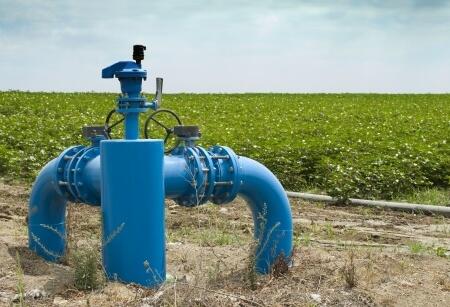The proposal would establish the first-ever national efficiency standards for pumps and would apply to clean water pumps between 1 and 200 horsepower

The U.S. Department of Energy (DOE) proposed new efficiency standards yesterday for commercial and industrial pumps that are based on efficiency levels negotiated by manufacturers, efficiency advocates, and other stakeholders. The proposal would establish the first-ever national efficiency standards for pumps.
The proposed standards would apply to clean water pumps between 1 and 200 horsepower, which are used for a wide variety of applications such as irrigation, circulation of hot or cold water in commercial buildings for heating and cooling, and pressure boosting in high-rise apartment buildings, for example. The standards would require that the least-efficient 25% of pumps in today’s market be redesigned to improve efficiency and reduce energy losses.
Pumps meeting the new standards sold over 30 years would reduce U.S. electricity consumption by about 30 billion kilowatt-hours, which is equivalent to the annual electricity use of 2.8 million U.S. households, and save customers $0.4-1.1 billion.
The standards proposed yesterday reflect efficiency levels that were agreed to by manufacturers, efficiency advocates, pump users, and utilities as part of a negotiated rulemaking, and build on standards established in the European Union.
The proposed standards are based on a metric called “pump efficiency index,” or PEI, which is a ratio of the power consumption of a given pump to the power consumption of a pump that just meets the minimum standards. A pump with a PEI of 0.9, for example, would consume 10% less power than a pump that just meets the minimum requirements. The PEI metric incorporates not just the power consumption of the pump itself, but also of the motor that drives the pump and any controls.
In many pump applications, the required flow is variable. Oftentimes, this variable flow is achieved by opening and closing valves. However, controlling pumps with valves wastes a significant amount of energy. A better option for variable load applications is to control the pump using a variable speed drive, which adjusts the pump output to just meet the required load. The energy saving benefits of variable speed drives are captured in the PEI metric such that a pump with a variable speed drive will have a significantly better (i.e. lower) PEI rating than a constant-speed pump. The PEI ratings will provide additional information to customers for their purchasing decisions as well as a mechanism for utilities and other efficiency program administrators to incentivize high-efficiency pumps.
DOE is scheduled to publish a final rule by the end of 2015, and the standards would take effect four years later.





